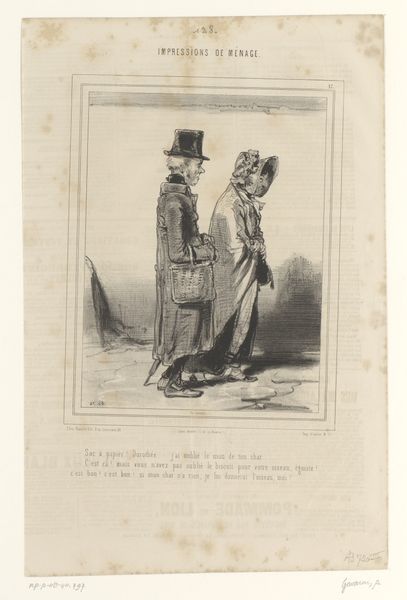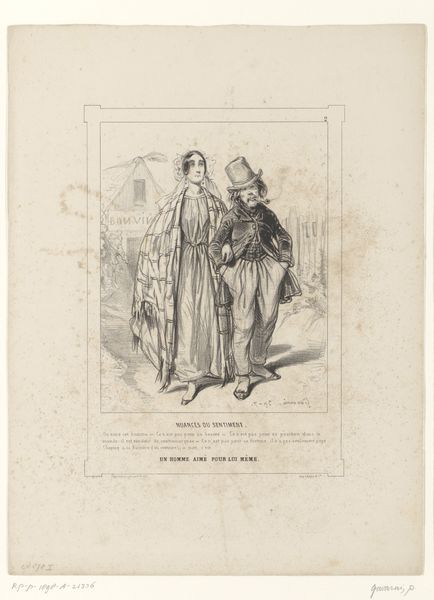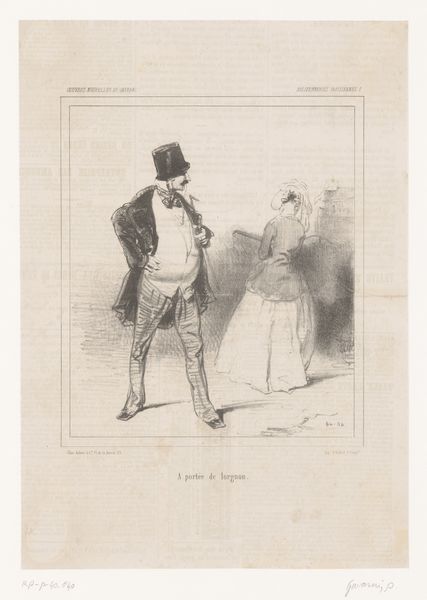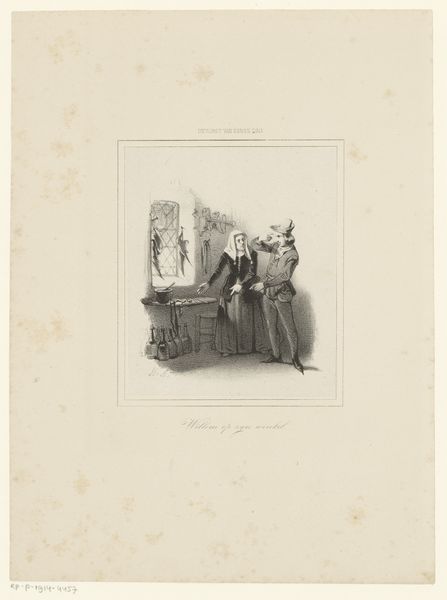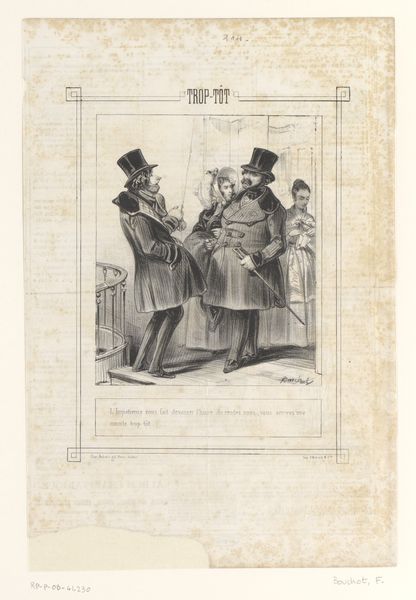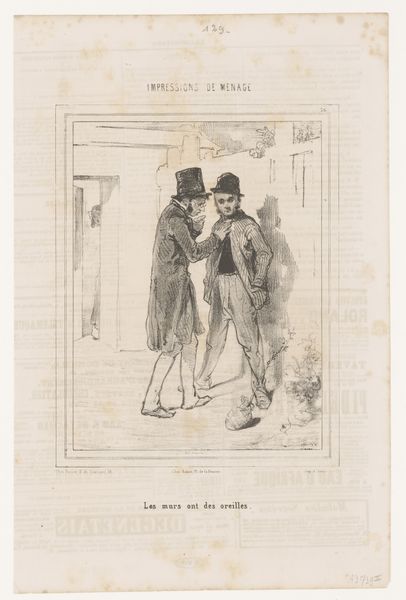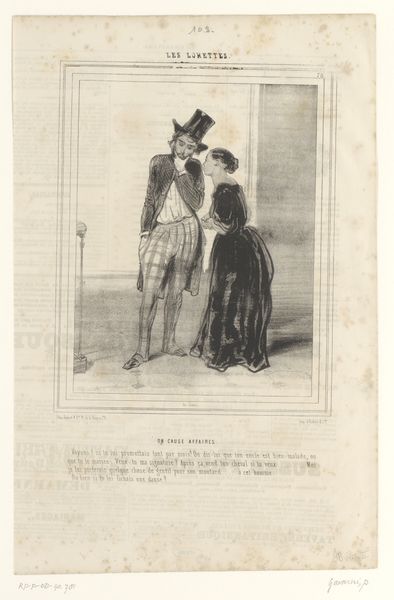
drawing, graphite, pen
#
portrait
#
drawing
#
imaginative character sketch
#
light pencil work
#
quirky sketch
#
pencil sketch
#
figuration
#
personal sketchbook
#
idea generation sketch
#
sketchwork
#
romanticism
#
graphite
#
sketchbook drawing
#
pen
#
genre-painting
#
storyboard and sketchbook work
#
sketchbook art
Dimensions: height 319 mm, width 228 mm
Copyright: Rijks Museum: Open Domain
Editor: So, here we have Paul Gavarni's "Man en vrouw in tenue voor visite" from 1837, a pen and graphite drawing. I'm immediately drawn to the intricate linework and the overall elegance of the figures. How do you interpret this piece, focusing on its formal elements? Curator: Well, let us observe the structural components. The artist’s choice of graphite and pen facilitates the rendering of delicate tonal variations. Note how Gavarni employs cross-hatching to define volume, particularly in the garments. The linearity is paramount; it directs the eye and delineates form. Consider, also, how the frame itself operates, visually containing the figures and intensifying their presence. Editor: I notice the contrasting textures too, like the woman’s frilly bonnet versus the man's sharp suit. Does this contrast create a certain tension within the composition? Curator: Precisely. The interplay between contrasting textures is a key structural device. The feathered bonnet presents a soft counterpoint to the rigid geometry of the man's hat and coat. This juxtaposition introduces a subtle visual dissonance, a dynamic relationship that elevates the work beyond mere representational depiction. It’s a sophisticated orchestration of form. Editor: It's fascinating to consider the visual language beyond just what is depicted. The artist is really guiding our eyes! Curator: Indeed, and through a conscious manipulation of line, tone, and texture, Gavarni achieves a formal complexity that invites deeper contemplation. We discern here how the artist is less interested in narrative than he is in exploring aesthetic relationships between line and form. Editor: This formal analysis really reframes my understanding of the drawing! Thank you. Curator: My pleasure. Art's structure often dictates its essence.
Comments
No comments
Be the first to comment and join the conversation on the ultimate creative platform.


